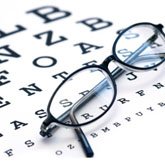In search of better bifocals

If you're having trouble reading the fine print, you have more options than just those glasses with the lined lenses that your parents wore. A software program designed at the University of Minnesota, in partnership with Vision-Ease Lens, stands to markedly improve vision for you and the estimated 78 million Americans who wear bifocal glasses. Patented by Benjamin Franklin in 1784, bifocal lens technology saw relatively few advances over the next 175 years. The bifocal lens with its two parts--the top half for viewing at distance and the bottom half for reading--was the norm until progressive lenses hit the market. The invention of the progressive lens, sometimes referred to as no-line bifocals, in 1959 eliminated the distracting line between the short- and long-distance portions of the lens, offering bifocal wearers a smooth transition between vision zones--and a way for some to hide the fact that they were over 40 and needed reading glasses. The cause is presbyopia, an age-related condition that stems from a gradual loss of flexibility in the natural lens. It varies from astigmatism, nearsightedness, and farsightedness, which are related to the shape of the eyeball and caused by genetic factors, disease, or trauma. While annual sales of no-line bifocals have grown to an estimated $1.5 billion, the technology to design progressive lenses has not been widely explored. "When Vision-Ease first contacted us early in 2000 with some questions about lens surface modeling, we were surprised to find very few published research papers on the topic," said Fadil Santosa, a mathematics professor with the U's Institute of Mathematics and its Applications. "There were many patent filings on lens design, but very little is revealed in them. The field was literally wide open." Santosa, along with fellow mathematics professor Robert Gulliver and graduate student Jing Wang, began looking into the mathematics of progressive lens design. Their research lead to a software program called Ophtima, which would reduce the computation time for accurate power distribution.
How did we get bifocals?
Benjamin Franklin had poor vision and needed glasses to read. He got tired of constantly taking them off and putting them back on, so he figured out a way to make his glasses see both near and far. He cut the lenses from two pairs of spectacles in half, and then put the different halves together in a single frame.
In other words, "This novel approach allows optical engineers to design a surface in seconds," says Derek Harris, vice president for research and development at Vision-Ease Lens, a privately held company based in Ramsey, Minnesota. "The efficiency of the computation minimizes aberrations, and the easy-to-use software interface offers opportunities to explore the lens design space, leading to unique designs for conditions such as astigmatism." Vision-Ease Lens recently signed a licensing agreement with the University of Minnesota to use the Ophtima software to design no-line bifocal eyeglass lenses. (The mathematical designs in the software were patented in 2006.) According to University of Minnesota Regents policy, net income obtained from a licensing agreement is split evenly among the inventor, the U's Office of the Vice President for Research, and the resident college. "This is a great example of the University partnering with a local company," says Eric Hockert, technology marketing manager at the University's Office for Technology Commercialization. "Both parties benefit--Santosa and his colleagues advanced knowledge in their field, and Vision-Ease found a solution for a vexing technical issue [in their industry]."
Source: The Franklin Institute
